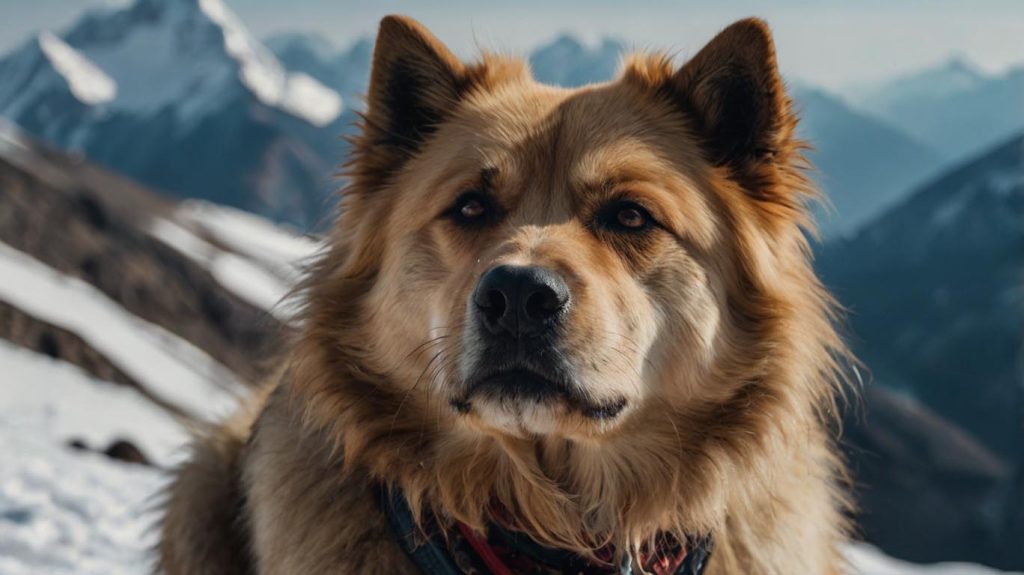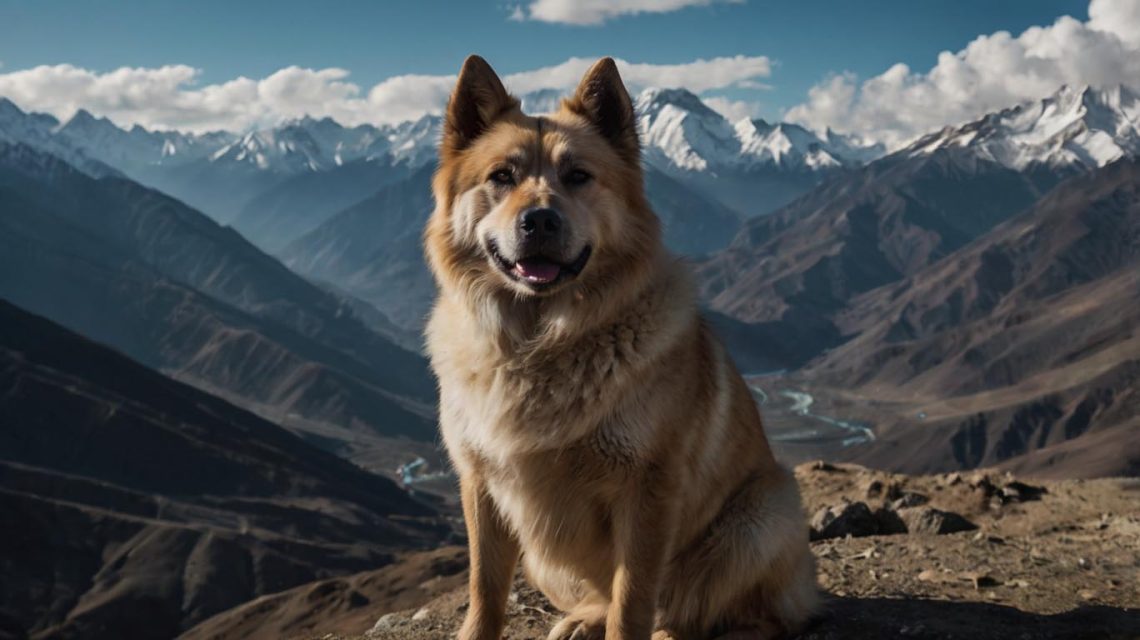Introduction
Deep in the rugged landscapes of the Himalayas, a powerful, intelligent, and loyal breed has stood the test of time. The Himalayan dog, known for its strength and resilience, has been an essential companion to nomadic tribes, monks, and villagers in the region for centuries.
With their thick fur, strong build, and fearless nature, these dogs thrive in extreme conditions, offering protection and companionship. Whether you are fascinated by their history, considering adopting one, or just curious about these magnificent animals, this guide will cover everything you need to know.
History and Origin of the Himalayan Dog
The Himalayan dog is not a single breed but refers to various large, mountain-dwelling dogs from the Himalayan region.
An Ancient Guardian of the Mountains
For centuries, Himalayan dogs have been bred to survive the harsh, high-altitude environments of Tibet, Nepal, Bhutan, and Northern India. Their primary roles included:
- Guarding livestock from predators like wolves and snow leopards.
- Protecting villages and monasteries from intruders.
- Serving as loyal companions to nomadic herders.
Connection to the Tibetan Mastiff
One of the most well-known Himalayan dog breeds is the Tibetan Mastiff—a massive, lion-like dog that has gained worldwide recognition for its size, strength, and protective instincts.
Other lesser-known breeds include:
- Bhutia Dog (common in Nepal and India)
- Himalayan Sheepdog (similar to the Tibetan Mastiff but slightly smaller)
These breeds share a common ancestry and were bred for similar purposes.

Physical Characteristics of the Himalayan Dog
Himalayan dogs are built to withstand extreme weather conditions, making them some of the toughest working dogs in the world.
Size and Build
- Large and muscular, typically weighing 80-150 pounds.
- Males are often bigger and more dominant than females.
- Strong bone structure, giving them a commanding presence.
Coat and Colors
- Thick, double-layered fur provides insulation against freezing temperatures.
- Coat colors range from black, brown, tan, and red to a mix of shades.
- Some have mane-like fur around their neck, enhancing their regal look.
Lifespan and Health
- Himalayan dogs typically live between 10-15 years.
- They are prone to hip dysplasia and joint problems due to their size.
- Regular vet check-ups are essential for maintaining their health.
Temperament and Behavior of the Himalayan Dog
These dogs are known for their fierce loyalty, intelligence, and independence. However, they require an experienced owner who understands their unique temperament.
Loyal and Protective
- Himalayan dogs are deeply devoted to their families.
- They are naturally territorial and will protect their home with unwavering dedication.
- Early socialization is key to ensuring they differentiate between real threats and harmless visitors.
Independent Thinkers
- Unlike many other working breeds, they are not eager to please.
- Training requires patience and firm but gentle leadership.
Great with Families but Require Proper Training
- With early training and socialization, they can be gentle and affectionate with family members.
- They may not be ideal for first-time dog owners due to their strong-willed nature.
How to Care for a Himalayan Dog
Owning a Himalayan dog is a big responsibility. They require proper care, training, and a suitable environment to thrive.
Diet and Nutrition
- A high-protein diet supports their muscular build and energy levels.
- Include lean meats, fish, and healthy grains like brown rice or quinoa.
- Avoid overfeeding, as they can be prone to obesity.
Exercise Requirements
- Despite their large size, they are not overly active indoors.
- Long daily walks and outdoor playtime are essential.
- Mental stimulation, such as puzzle toys or training exercises, prevents boredom.
Grooming Needs
- Their thick coat requires regular brushing (at least twice a week) to prevent matting.
- During shedding seasons (spring and fall), daily brushing helps control loose fur.
- Occasional baths keep their coat clean, but excessive washing can strip natural oils.
Training a Himalayan Dog
Training a Himalayan dog requires consistency, patience, and confidence.
Start Training Early
- Begin obedience training as early as 8 weeks old.
- Socialization with different people and animals prevents aggression.
Use Positive Reinforcement
- Reward-based training (treats and praise) works better than harsh discipline.
- Avoid punishment, as these dogs do not respond well to negative reinforcement.
Teach Essential Commands
- “Sit,” “Stay,” “Come,” and “Leave It” are crucial for a well-behaved dog.
- Leash training is important, as their natural guarding instincts may cause them to pull.
Common Health Issues in Himalayan Dogs
Although strong and resilient, Himalayan dogs can develop specific health problems.
Hip and Elbow Dysplasia
Large breeds are prone to joint issues, which can cause pain and mobility problems.
Obesity and Metabolic Disorders
Due to their slower metabolism, maintaining a healthy diet and exercise routine is essential.
Eye Conditions
Himalayan dogs may suffer from entropion (eyelid abnormalities) or cataracts as they age.
Regular vet visits and a balanced lifestyle help prevent many of these issues.
Is a Himalayan Dog Right for You?
Before adopting or purchasing a Himalayan dog, consider your lifestyle and experience level.
Ideal Owners
✔️ Experienced dog handlers familiar with large, independent breeds
✔️ Homes with spacious yards or access to outdoor areas
✔️ Families looking for a protective yet affectionate companion
Not Ideal For
❌ First-time dog owners who lack experience with dominant breeds
❌ Apartment dwellers with limited space
❌ Owners unable to commit to proper training and grooming
Where to Find a Himalayan Dog
If you’re interested in owning a Himalayan dog, consider these options:
Adoption and Rescue Centers
- Himalayan Animal Rescue Trust (HART) – Focuses on rescuing mountain dogs.
- Local shelters in Nepal, India, and Tibet – Many Himalayan breeds need homes.
Reputable Breeders
- Ensure the breeder follows ethical breeding practices.
- Request health certificates and genetic testing for common conditions.
Conclusion
The Himalayan dog is a remarkable breed known for its loyalty, intelligence, and strength. While they make excellent guardians and companions, they require proper training, space, and an experienced owner who understands their needs.
If you’re ready to commit to their care, a Himalayan dog will reward you with unmatched devotion and protection. Whether as a working guardian or a loving family member, this majestic mountain dog will leave a lasting impression on anyone lucky enough to have one.
FAQs
Are Himalayan dogs good with children?
Yes, but early training and supervision are necessary to ensure gentle interactions.
Do Himalayan dogs get along with other pets?
They can, but proper socialization from a young age is crucial.
How much exercise does a Himalayan dog need?
They require daily walks and mental stimulation but are not as hyperactive as other working breeds.
Are Himalayan dogs expensive?
Yes, especially purebred Tibetan Mastiffs, which can cost thousands of dollars.
Do they adapt well to hot climates?
No, their thick coat makes them better suited for colder environments.


